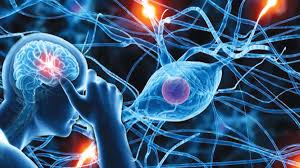Blog
Mansrufer: True Stories from Those Who’ve Experienced the Unexplained

Have you ever heard whispers of strange figures lurking in the shadows? These stories often lead us to one common term: Mansrufer. This enigmatic phenomenon has intrigued and terrified many, leaving a trail of unanswered questions in its wake. As more individuals share their encounters, we find ourselves drawn deeper into the mystery. What exactly is a Mansrufer? And why do so many people feel compelled to recount their chilling experiences? Let’s embark on this exploration together, peeling back layers of history, personal tales, and even scientific scrutiny surrounding these elusive beings. Dive into the world of Mansrufer—where reality meets the unknown.
Feature 1: The History Behind Mansrufer
Mansrufer has intrigued people for centuries. Its origins are steeped in folklore, often linked to ancient cultures that revered the unknown. Tales of strange apparitions and haunting encounters were passed down through generations.
Historically, Mansrufer was seen as a guardian or trickster spirit. Many believed it existed between realms, blurring the lines between life and death. Ancient texts hint at rituals performed to communicate with these entities.
Over time, stories evolved, reflecting societal fears and beliefs about the supernatural. The 19th century saw a surge in interest as spiritualism took hold. People sought answers beyond the physical world.
Today’s interpretations vary widely but share common threads from their historical roots. As technology advances, so does our understanding—or misunderstanding—of what Mansrufer truly represents within human experience.
Feature 2: Types of Mansrufer Encounters
Mansrufer encounters are as diverse as the stories behind them. Individuals report a wide variety of experiences, many shrouded in mystery and fear.
Some describe sudden feelings of dread while walking alone at night. Shadows seem to shift, and whispers echo through the air. These encounters often leave people questioning their own senses.
Others recount physical sensations—an unseen presence brushing against their skin or an inexplicable chill that sends shivers down their spine. Such moments can feel overwhelmingly real yet remain elusive when revisited in memory.
Then there are those who claim direct interactions with a Mansrufer entity. These confrontations range from fleeting glimpses to prolonged engagements where individuals hear voices or see apparitions that defy explanation.
Every encounter is unique, each tale capturing a slice of the uncanny world surrounding us. Whether they inspire terror or fascination, these narratives deepen our intrigue about what lies beyond human understanding.
Feature 3: Scientific Explanations vs. Personal Experiences
When it comes to Mansrufer, the divide between scientific explanations and personal experiences is striking. Some researchers approach sightings with skepticism, attributing them to psychological phenomena or environmental factors. They point to sleep paralysis or hallucinations triggered by stress as potential culprits.
However, those who have encountered a Mansrufer often share vivid tales that defy rational explanation. Their stories are rich in detail—an unsettling presence felt in the dark woods, whispers echoed in abandoned buildings—elements that science struggles to quantify.
Personal narratives carry an emotional weight that statistics can’t capture. The fear and awe experienced can linger long after the encounter has ended. For many witnesses, these moments transcend mere coincidence; they become pivotal points of belief and curiosity about what lies beyond our understanding.
This tension between hard evidence and heartfelt testimony continues to fuel debates among believers and skeptics alike.
Feature 4: Famous Mansrufer Cases and Investigations
Throughout history, several famous Mansrufer cases have captivated the public’s imagination. One notable incident occurred in a small town where residents reported strange shadows moving through the woods at dusk. Witnesses described feeling an overwhelming sense of dread, often accompanied by inexplicable noises.
In another case, a group of hikers ventured into a national park and encountered what they believed to be a Mansrufer. Their chilling experience involved sudden temperature drops and disembodied whispers that seemed to follow them as they trekked deeper into the forest.
Investigators later examined these locations but found no physical evidence to explain the phenomena. However, they did document numerous eyewitness accounts filled with vivid details.
These stories continue to fuel discussions about what Mansrufers truly are—phantoms born from folklore or manifestations of something more mysterious lurking just beyond our understanding?
How to Protect Yourself from Mansrufer
When facing the enigmatic presence of a Mansrufer, awareness is your first line of defense. Stay alert in secluded areas where encounters are more likely. Trust your instincts; if something feels off, it probably is.
Creating a protective environment can be beneficial too. Surround yourself with positive energies—crystals like black tourmaline or amethyst may offer some reassurance against negativity.
Develop grounding techniques to keep you centered during unsettling experiences. Simple deep-breathing exercises can help you regain composure and clarity when fear arises.
Connecting with others who share similar experiences provides comfort and support. Join local groups or online forums dedicated to discussing Mansrufer encounters for shared insights and coping mechanisms.
Consider keeping an open dialogue with trusted friends about your feelings regarding these phenomena. Sharing thoughts helps diffuse anxiety while providing a buffer against isolation during strange events involving the unknown.
Conclusion: The Mystery Continues
The realm of Mansrufer remains shrouded in mystery. Those who have encountered it often share stories that blur the line between reality and the supernatural. From ancient legends to modern sightings, each account adds depth to our understanding of this enigmatic phenomenon.
As we continue to investigate and explore these experiences, it’s clear that there’s much more beneath the surface than what science can explain. The personal testimonies echo a universal feeling: an urge to unravel the unknown.
Whether you approach Mansrufer from a skeptical standpoint or embrace it with open curiosity, one thing is certain—the fascination will endure. As new cases emerge and old tales resurface, they challenge our perceptions and ignite our imaginations.
Will future generations uncover definitive answers? Or will Mansrufer remain forever elusive—a testament to humanity’s quest for understanding? Only time will tell as this captivating enigma unfolds further before us.
-

 Business7 months ago
Business7 months agoUnderstanding the Significance of License Plate 鲁Q 669FD
-

 Technology7 months ago
Technology7 months agoIs 8884216488 a Scam? Debunking Common Myths
-

 Technology7 months ago
Technology7 months ago164.68111.161: A Comprehensive Guide
-

 Digital Marketing7 months ago
Digital Marketing7 months agoWepbound: The Future of Digital Connectivity
-

 Entertainment7 months ago
Entertainment7 months agoStreameast: The Best Free Live Sports Streaming Platform in 2025
-

 Crypto7 months ago
Crypto7 months agoCrypto30x.com GG: Is It the Future of Crypto Investment?
-

 Crypto7 months ago
Crypto7 months agoCrypto30x.com AC Milan: A New Era for Fans Through Digital Currency
-

 Digital Marketing7 months ago
Digital Marketing7 months agoZryly.com Hosting: A Comprehensive Review of Their Its Services
-

 Digital Marketing7 months ago
Digital Marketing7 months agoHow Adsy.pw/hb3 is Revolutionizing Online Advertising Strategies
-

 Health & Fitness7 months ago
Health & Fitness7 months agoProstavive Colibrim: Discover the Benefits of Prostate Health



